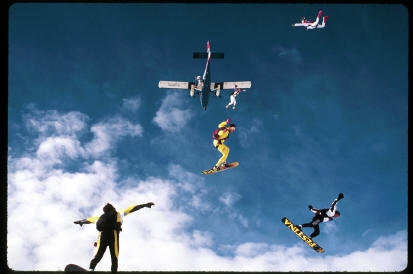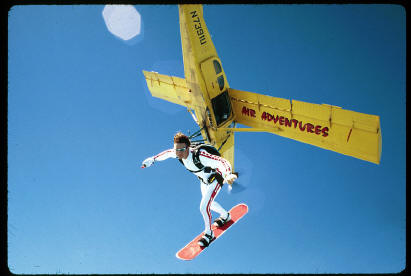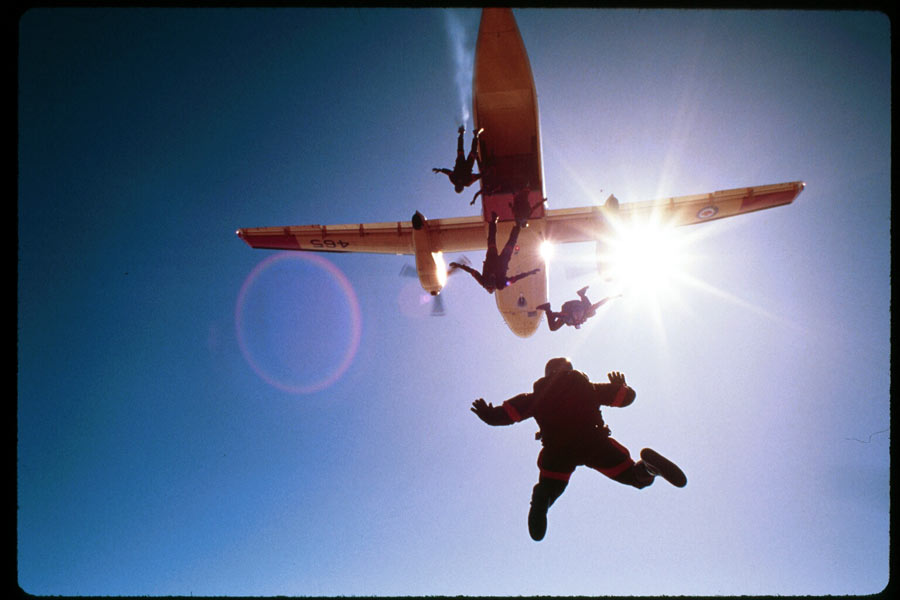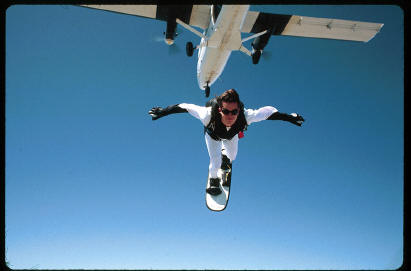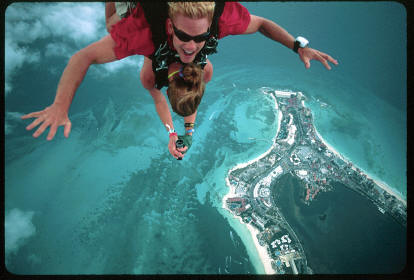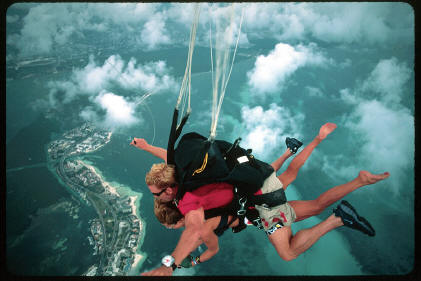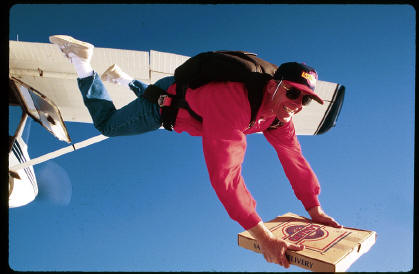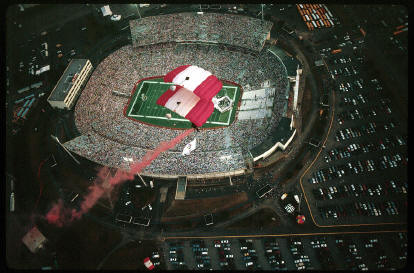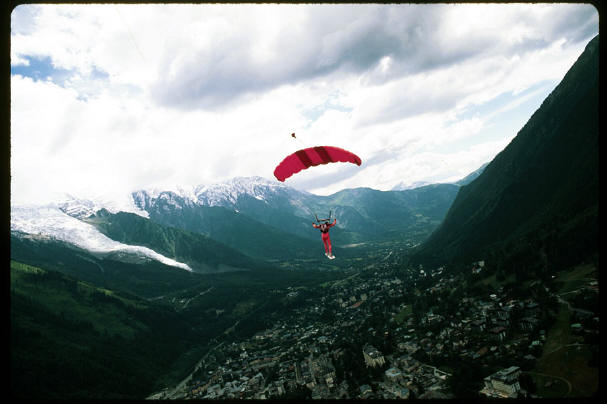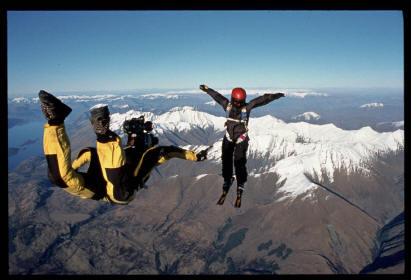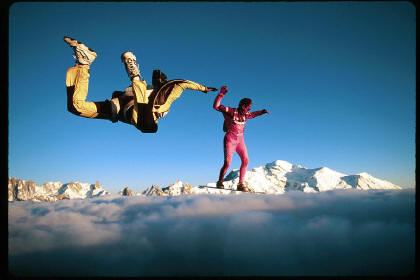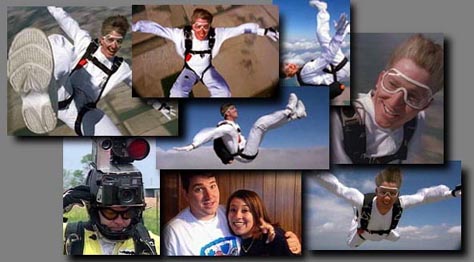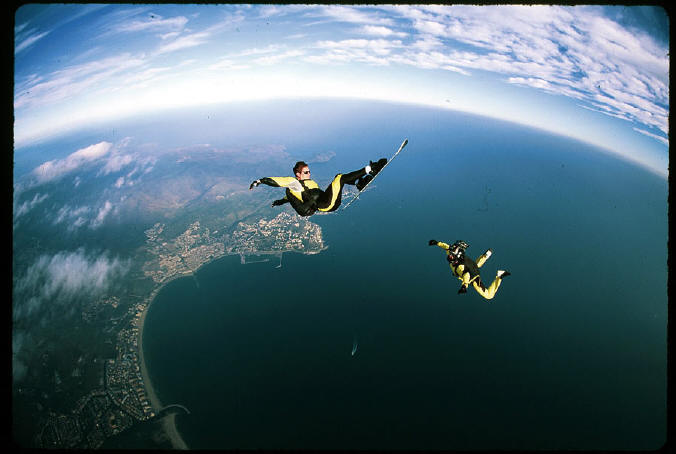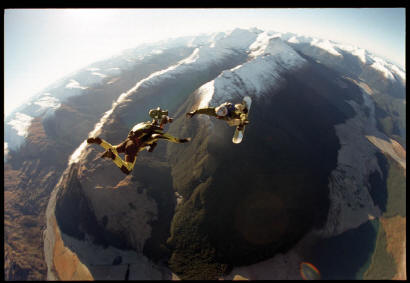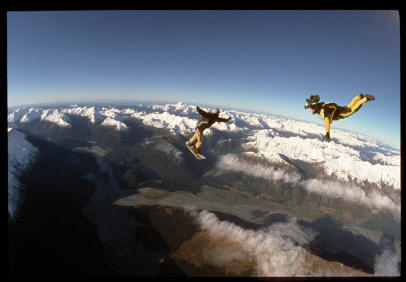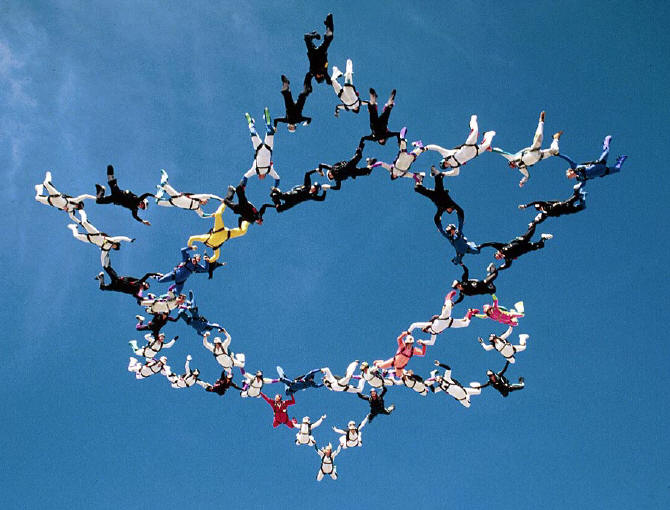|
Editors Note: In 1962 I used to hang out at Decker Airways at the Cupper Airport in Manville, New Jersey. My uncle, Rick Decker, owned and operated the air taxi service and rented space on the property to a group of men and women who were engaging in a new and exciting sport, called SKYDIVING. I was getting interested in photography and my Uncle Rick encouraged me to fly with him to create some unusual shots. I went out and purchased a Bolex P1 8mm Movie Camera that had the capability of 64 frames per second slow motion and I was set. My photography career, as a hobby was born. The skydivers were a most cordial and easy going group you could be around and helped me get some exciting footage of exits, freefalls and plane to plane shots. I owe a great deal to these jumpers for getting me "off the ground." I remember Jump Master, Ray Guilfoyle, Dick Lee, Ray Rieper, Larry Heasom, "Sonny Thorne and Danny Chapman. If anyone reads this and knows of any of these pioneering Skydivers, please contact me. Recently, I have been introduced to one of the finest skydiving image makers in the world, Joe Jennings. For unparalleled excitement and in depth knowledge about creating photographs while freefalling to earth, read his spellbinding article and view some of the most breathtaking skydiving images Joe has taken all over the world. Jim Moerschel
Jumping for Joy by Joe Jennings Hello, my name is Joe Jennings and I'm a freefall cameraman specializing in skydiving stunts and 35mm cinematography. Right now you and I are climbing in our jump plane to an altitude of 13,000 feet, where we will exit the plane and capture the images of other freefall experts for one of our commercial clients. This type of camera work, demands split second timing, coordination, physical memory, and lots of planning. I almost forgot. You have to like jumping out of a plane at 13,000 feet too.
While we're climbing to "jump run" altitude I'm planning EVERYTHING. No wasted time here. My first priority is to check my chute and right now in the plane I'm checking it for the second time. I have professional packers, who inspect my chute and pack it properly and now at 6000 feet I'm making my close inspection again. I want it right and properly secured. Believe it or not, but I've known camera flyers who got so caught up in thinking about shooting their photography, that they neglected safety checks. On a couple of occasions camera jumpers exited the plane with NO CHUTE on their back!! Other camera jumpers have died either falling out of their rigs or by getting cameras tangled in their parachute lines. Now that I've checked for the second time, I'm ready to start thinking about the photo shoot. Before we all climbed aboard, the entire team went through what we call a "dirt dive." That's where we walk through the entire sequence of the proposed stunt - a dress rehearsal of what we will do in the air. Each and every detail is planned out. Each of us wants to know where each of us will be while plunging to earth at terminal velocity. This could be around 140mph or so. Mid-air collisions do happen and they are usually fatal. The jumpers I film are great flyers, so I feel extremely confident being in the air with them. That makes my job of creating dynamic images much easier. 9000 feet and still climbing, just a few minutes away from "jump run." Now I'm checking my cameras. That's right, two of them. Both are mounted right on top of my helmet. I've got a super 35mm motion picture camera plus a 35mm still camera. The entire rig weighs 22 pounds. You have to have a strong neck too.
We're almost on jump run now so I power up the cameras and start recording with the video, put on the helmet and check the hand switches - the button I push for stills and the switch I use for on and off for the movie camera. Here we are at 13,000 feet and I move to the exit door, which is of course - NO DOOR - just the opening where the door is supposed to be. Normally, I'm the first to climb out the door of the plane. Jump planes have foot pegs and handles that allow jumpers to hang on the outside of the plane until exit. On exit my subjects will first rock out, then in, then EXIT. This rocking allows me to time my exit just before them, to frame the plane in the exit shot, or to let them fall past me to frame out the plane on exit. Split second timing and perfect positioning is crucial. My heart always skips a beat just before exit - it's exciting to me MOSTLY because of the IMAGES I'm able to bring to the ground. I've made over 5000 jumps so there isn't much "rush" anymore in the actual jumping, but filming the action is absolutely WONDERFUL. Did you check your chute? Then lets go freefall. Don't forget your camera!!! Doesn't this feel great! Now I have to position for the exit shots. In freefall, I fly the camera to compose the shots. Often I'm looking to pick off shots from a "story board" to tell a story for a TV commercial or movie. I memorize all these images well before the jump and we rehearse them and all the action on the ground. Right now we're doing it live and plunging to mother earth rapidly, so there isn't much time to think through the shots. My memory tells me what I want and my body just responds. This takes a lot of planning, pre-visualization and split second timing. I want to move the camera from point A to point B and my body just responds automatically. This allows me to concentrate on framing my subject and the angle of the sun an so on, without also having to think through just how I'll get into position.
We've been freefalling for about a minute. For some, that may seem forever, but for a cameraman it is very short and at around 3000 feet above the ground level it's time to break off the action and focus on deploying our parachutes. This is a critical moment for a camera flyer, because of all the junk and weight on his head. A hard opening can break a jumpers neck, especially with heavy cameras, so my parachute system is built for slow, soft openings and as I mentioned up there in the plane, I work with expert parachute packers. Still, on occasion, I can have a hard opening, so its important for me to have my body properly aligned, back straight, eyes on the horizon, neck kind of crunched down into my shoulder muscles and sometimes a firm grip on the jaw piece of the helmet. Are you ready?? DEPLOY!!
Now that we're opened I'll guide us in for a safe landing to the "drop zone." In production work the landing area can be anywhere. Many times it's a small parking lot, maybe the roof of a building or a patch of grass in a clearing in a remote jungle. Landing safely is often the most challenging part of the entire skydive! Now, wasn't that fun. Quick! Now comes the exciting part. Let's see how good the pictures came out!!!
The
Team: Harry O'Connor - Coordination
The action sequences are going to be good. The wardrobe looks great. The weather sucks. We've mostly been sitting under the marine layer that covers the beaches and a few miles in land in most places. So far, we've shot around one full day's worth of jumps. Keith, Tanya, and Craig are doing great work considering the limited jumps we've shot so far. The required shots are coming together quickly. My hope now is that we get good weather on our final days so that we can get creative and make the sequence even more exciting. We're shooting over the beach in Oceanside trying as best as we can to predict the weather. I believe we're down to two final days, unless we find some way to extend the schedule. Most of the rest of the production for the entire movie is wrapped - except us. More info coming... 5/21/2000 - Update
Sunday Iím best man at a wedding in New Jersey. Champaign flowing, roasting the groom. Monday, I'm bound for Little Rock, Arkansas and Joneís Productions to shoot aerial scenes for a Blue Cross commercial conceived by the ad agency, Martin and Martin. The commercial begins with a peaceful view of blue sky and puffy white clouds. Suddenly a skydiver drops into frame, flipping, turning, free flying, smiling. Blue Cross goes extreme. He deploys a big white parachute with the Blue Cross Blue Shield logos and casually floats down to earth. A single guy flipping through the sky, nothing technical, just having fun. The production coordinator and purely southern dude, Tim Shick, met me at the Little Rock airport, heaved my stuff into his truck and off we went to meet the jumper talent, Jaime Paul. I crashed like a rock. The next day was practice. The parachute center chosen for the shoot was the Central Arkansas Skydiving Center located in ________, AR, a nice facility with a Queen Air and Cessna, owned and operated by Jim Weddle and family. Real friendly folks with twangy accents. Course I should have expected that. A friend of Jaimeís told us that most of the land around the airport would be covered in water and that the landing area was approximately fifty by one hundred feet (small). That was kind of intimidating to imagine, and Iíd be carrying 20 pounds of cameras on my head Ė not healthy in the event of a splash down. I figured, Iíd turned down other drop zones, Iíll turn this one down if things arenít right. Turns out, dry fields for as far as we could see in every direction. She must have been thinking of some other planet.
Most skydiving centers are out in the boonies. Jimís DZ was no exception. _____ is all small town. Most of commerce ran along one street, people seemed to pass most of the day on the front porch, the big ball game in town was Little League. What impressed me most was the latest crime. Seems some of the local boys robbed the town rib shop. In the dark of night, they snuck in, armed with spray paint to knock out the video surveillance system. After that, they grabbed the loot and made a getaway. Before theyíd finished counting their quarters, though, local police stormed their hide out. Seems they sprayed the television monitor instead of the cameras. Case closed.
On days one and two of the shoot, Jaime and I had the Queen Air mostly to ourselves. Our pilot appeared almost old enough to have a driverís license, but I could tell he was damn good, and heíd have us at thirteen thousand feet in less than ten minutes. Must have sat on his dadís lap in the crop duster as a kid. Weíd have easily finished the job in a day, but the weather kept us for three. Days one and two of the shoot pretty much went down the tubes, but on day three, Jaime and I jammed through fourteen jumps from Jimís Cessna and nailed everything, including jumps just to get stills for magazine adds and billboards. Jaime even made a jump for stills in Missouri, but I wonít get into that. OK, I screwed up a shot. Dan Kateras of Martin and Martin, and Gary Jones directed Jaime and me. Their ideas were good and the shots came together to make a fun commercial, that as I hear it, became quite popular in Arkansas. Iíve heard rumors of a sequel. Bring it on.
I wish all of you safe skydiving and great shooting. Thanks for joining me. Joe Jennings
Joe Jennings Web Sight -- http://www.skydive.tv
|
